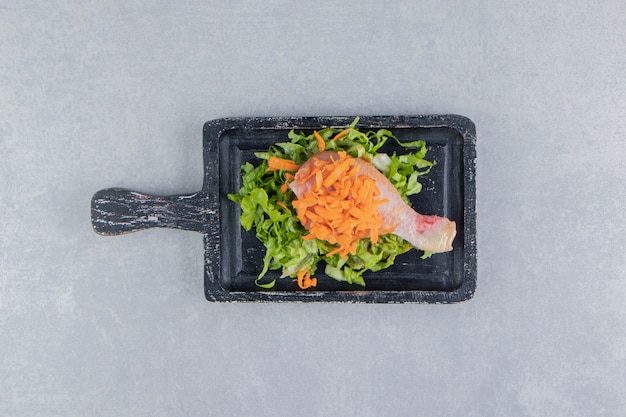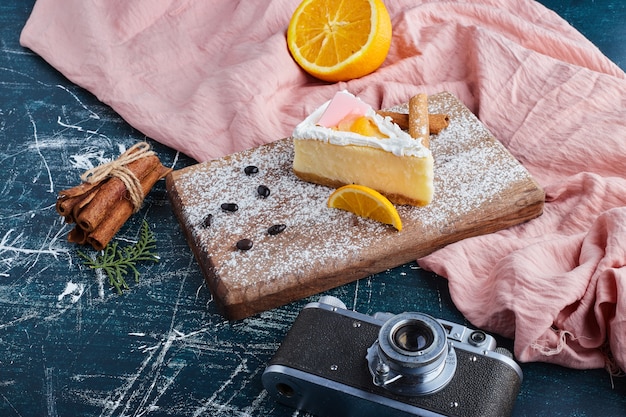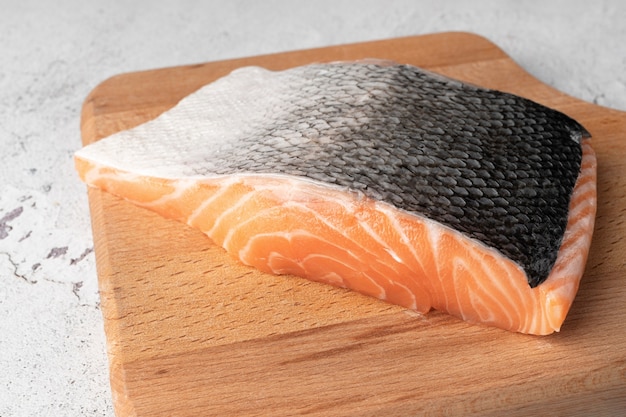Let's be honest, we've all been there. It's 5 pm, your stomach's grumbling, and the thought of facing a crowded supermarket, let alone a fishmonger's, is just too much. That's when the frozen salmon aisle calls, a beacon of convenience and, surprisingly, deliciousness. I'm here to tell you that oven-baked frozen salmon can be just as delightful as its fresh counterpart, and it's a total breeze to prepare. So grab your trusty oven gloves, get comfy, and let's dive into this ultimate guide to unlocking the secrets of perfectly cooked frozen salmon.
Part 1: The Frozen Salmon Odyssey - From Supermarket to Oven

Our journey begins in the frozen food aisle. Don't be shy, explore those freezer shelves! I'm a huge fan of skin-on salmon fillets. The skin adds a fantastic crispness, a bit of textural drama, if you will. Look for fillets that are firm to the touch, with a vibrant, deep pink hue. A good, tight wrap is a sign they've been stored correctly.
1.1: Thawing Time - Patience is a Virtue
Now, we've got to thaw this beauty out. You can't just toss a frozen fillet straight into the oven, can you? (Unless you're looking for a culinary disaster!) My favourite method is to transfer the salmon from the freezer to the fridge the night before. It takes a good 8-10 hours for a proper thaw, allowing the salmon to defrost gently and evenly. If you're in a pinch, you can thaw it in a bowl of cold water, but be sure to change the water every 30 minutes or so to keep it chilly. This method takes about 30-45 minutes.
1.2: Preheating Your Oven - The Crucial First Step
While the salmon is thawing, let's get the oven ready. Preheating is crucial, folks! It ensures that the salmon cooks evenly and prevents it from drying out. Set your oven to 180°C (350°F), and let it warm up while you get to the good stuff: flavouring!
Part 2: The Art of Flavouring - A Symphony of Tastes

This is where the magic truly happens. You get to create a flavour profile that complements the natural sweetness of the salmon. I'm a sucker for simplicity, a classic approach. A generous pinch of salt, a crack of black pepper, and a squeeze of fresh lemon juice - that's my go-to. But let's get creative, shall we?
2.1: Herbs and Spices - A Garden of Delights
Fresh herbs like dill, parsley, and chives bring a bright, refreshing touch. Dried herbs, like thyme or rosemary, offer a more complex aroma. I like to mix things up, using a blend of fresh and dried herbs. For a kick, add some chili flakes or a sprinkle of cayenne pepper. Just a touch goes a long way!
2.2: Garlic and Ginger - A Powerful Duo
Garlic and ginger add a beautiful depth of flavour. I usually mince a couple of cloves of garlic and grate a small piece of ginger. For extra oomph, you can add a pinch of ground coriander or cumin.
2.3: Citrus Zest - A Bright and Zingy Touch
Lemon zest provides a delightful citrusy punch. Orange zest is a fantastic alternative. You can even mix and match citrus fruits, like a combination of lemon and lime zest.
Part 3: Baking Time - The Main Event

Now, here we are, the grand finale! Get your trusty oven gloves ready, because it's baking time.
3.1: Choosing the Right Baking Dish - Setting the Stage
Choose a baking dish that's the perfect size for your salmon fillet, ensuring it has enough room to cook evenly. A glass baking dish, a metal baking dish, or even a baking sheet will do the trick.
3.2: The Baking Time - A Matter of Timing
The baking time depends on the thickness of your salmon fillet. For a medium-thick fillet, 15-20 minutes is usually enough. If you're unsure, use a meat thermometer. The salmon should reach an internal temperature of 145°F (63°C) for safe consumption.
3.3: To Flip or Not to Flip - A Personal Choice
Now, this is a matter of personal preference. If you're aiming for a beautifully crispy skin, leave it skin-side down for the entire cooking time. For a more tender texture, flip the salmon halfway through the baking process.
Part 4: Serving Time - A Feast for the Senses
And there you have it, your oven-baked frozen salmon is ready! Now, let's create a delicious symphony of flavours and textures.
4.1: side dishes - Complementary Companions
The beauty of salmon is its versatility. It pairs wonderfully with a variety of side dishes. For a simple yet elegant touch, I love roasted vegetables like asparagus, broccoli, or sweet potatoes. For a heartier meal, try mashed potatoes, rice, or quinoa. A vibrant green salad with a light vinaigrette dressing always adds a fresh touch.
4.2: Sauces - A Touch of Magic
A light sauce can truly elevate the salmon's flavour. A simple lemon butter sauce is a timeless classic. For a more indulgent option, try a creamy dill sauce or a garlic and herb sauce.
Part 5: Leftover Love - Making the Most of Every Bite
Don't fret about leftovers, they're a culinary gift! Salmon makes a fabulous addition to quick lunches or dinners. I like to add it to salads, wraps, or pasta dishes. It's also delightful cold on a sandwich, or crumbled into a quiche. It's a versatile ingredient, full of flavour even after it's cooked.
Part 6: Tips and Tricks - A Culinary Toolkit
Here's a collection of tips and tricks I've learned over the years.
- Don't overcook it! overcooked salmon is a tragedy, resulting in dry, tough flesh. It's better to err on the side of undercooked, as it will continue to cook a little bit after it's taken out of the oven.
- Use a baking sheet with a lip to catch any juices that might leak out during baking. This prevents messy ovens and makes it easier to create a pan sauce afterwards.
- Experiment with flavour combinations. I've shared some of my favourites, but the world is your oyster, or rather, your salmon. Get creative and see what magic you can create!
- Serve it with a squeeze of fresh lemon juice just before serving. This adds a vibrant burst of freshness.
- Don't be afraid to try different cooking methods. If you don't have an oven, you can grill, pan-fry, or even poach salmon. There are so many ways to cook it!
Part 7: Variations - A culinary adventure
Once you've mastered the basics of oven-baked frozen salmon, it's time to experiment with different flavour variations, adding your own unique flair.
7.1: Glazed Salmon - Sweet and Savoury Harmony
For a sweet and sticky glaze, brush your salmon with a mixture of honey, soy sauce, and ginger before baking. The glaze caramelizes in the oven, creating a beautiful, glossy finish.
7.2: Salmon with Herbs and Lemon - A Fresh and Zesty Delight
This combination is a classic for a reason. Simply rub a mixture of fresh herbs like dill, parsley, and chives into the salmon, and then squeeze a lemon over the top before baking. The fresh herbs and citrus add a vibrant, invigorating flavour.
7.3: Salmon with Dijon Mustard and Thyme - A Tangy and Aromatic Treat
This combination is a real winner. Mix together some Dijon mustard, thyme, and a little olive oil. Rub the mixture into the salmon, and then bake as usual. The mustard and thyme create a wonderfully flavourful and tangy sauce that will have you coming back for more.
7.4: Salmon with Balsamic Glaze - A Sophisticated and Elegant Touch
For a more sophisticated flavour profile, try a balsamic glaze. Simply brush your salmon with a balsamic vinegar glaze before baking. This creates a beautiful glossy glaze that adds a touch of sweetness and tanginess.
Part 8: FAQs - Unveiling the Mysteries
I've received my fair share of questions about oven-baked frozen salmon, so here are a few of the most common ones.
8.1: Can I bake frozen salmon without thawing it?
I wouldn't recommend it. The salmon will cook unevenly and might not be cooked through. It's always best to thaw it properly first.
8.2: How do I know if my salmon is cooked through?
The salmon should be opaque and flake easily with a fork. You can also check the internal temperature with a meat thermometer. It should reach an internal temperature of 145°F (63°C) for safe consumption.
8.3: What happens if I overcook my salmon?
Overcooked salmon will be dry and tough. It's better to err on the side of undercooked, as you can always cook it a little longer if needed.
8.4: Can I bake salmon with the skin on?
Absolutely! I actually prefer to bake salmon with the skin on. It adds a nice crispy texture. Just make sure to remove the skin before serving if you prefer.
8.5: What can I do with leftover salmon?
Leftover salmon is great for salads, wraps, pasta dishes, sandwiches, or even crumbled into a quiche. It's a versatile ingredient that can be enjoyed in many different ways.
Conclusion
There you have it! Your ultimate guide to oven-baked frozen salmon, a delicious and convenient meal that's perfect for any night of the week. It's a simple, affordable, and versatile dish that can be adapted to suit your taste. So, next time you're looking for a quick and easy meal, give it a try. I promise you won't be disappointed!
Everyone is watching

Prime Rib Roast Cooking Time Chart: Per Pound Guide
Cooking TipsPrime rib roast. Just the name conjures images of lavish dinners, crackling fires, and hearty laughter. It’s ...

How Long to Bake Potatoes in the Oven (Perfect Every Time)
Cooking TipsBaked potatoes are a staple in my kitchen. They're incredibly versatile, delicious, and surprisingly easy to m...

Perfect Rice Every Time: The Ultimate Guide to Cooking Rice
Cooking TipsAs a self-proclaimed foodie, I've always been a bit obsessed with rice. It's the foundation of countless cuisi...

The Ultimate Guide to Cooking Asparagus: Tips, Techniques, and Recipes
Cooking TipsAsparagus. The mere mention of this spring delicacy conjures up images of vibrant green spears, crisp and burs...

Ultimate Guide to Cooking the Perfect Thanksgiving Turkey
Cooking TipsThanksgiving. Just the word conjures up images of overflowing tables laden with delicious food, the scent of r...
